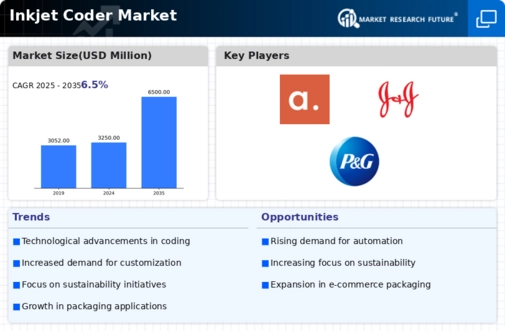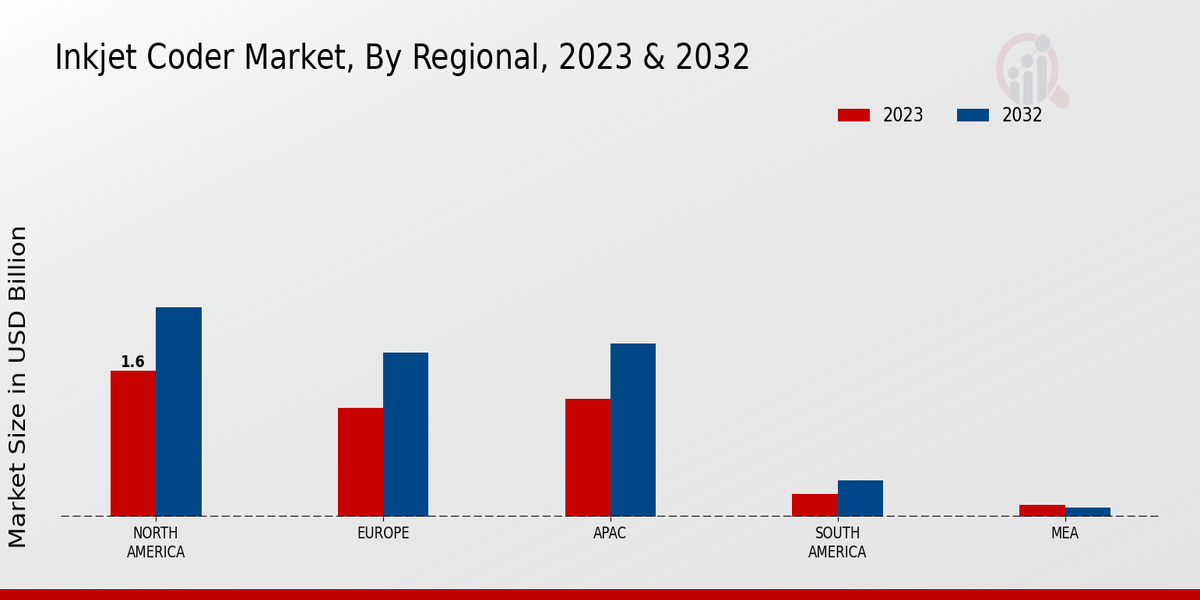Market Growth Projections
The Global Inkjet Coder Market Industry is expected to experience substantial growth in the coming years. Market projections indicate a value of 3250 USD Million in 2024, with an anticipated increase to 6500 USD Million by 2035. This growth trajectory suggests a compound annual growth rate of 6.5% from 2025 to 2035. Such figures reflect the increasing adoption of inkjet coding technologies across various sectors, driven by factors such as technological advancements, regulatory compliance, and the need for product traceability. The market's expansion is indicative of the vital role inkjet coders play in modern manufacturing and packaging processes.
Sustainability Initiatives
Sustainability initiatives are becoming a focal point within the Global Inkjet Coder Market Industry. As environmental concerns rise, companies are seeking eco-friendly packaging solutions that minimize waste and reduce their carbon footprint. Inkjet coding technologies are evolving to accommodate these sustainability goals, with innovations such as water-based inks and recyclable materials gaining traction. This shift not only aligns with consumer preferences but also meets regulatory pressures for sustainable practices. The market's growth trajectory is expected to reflect these changes, as businesses increasingly adopt inkjet coding solutions that support their sustainability objectives.
Technological Advancements
The Global Inkjet Coder Market Industry is experiencing rapid technological advancements, which are enhancing the efficiency and capabilities of inkjet coding systems. Innovations such as high-resolution printing and faster drying times are becoming increasingly prevalent. For instance, the introduction of advanced print heads allows for greater precision and versatility in applications across various sectors, including food and beverage, pharmaceuticals, and consumer goods. These advancements not only improve product traceability but also comply with stringent regulatory requirements. As a result, the market is projected to grow significantly, with an estimated value of 3250 USD Million in 2024, reflecting the industry's commitment to innovation.
Growth in E-commerce and Packaging
The Global Inkjet Coder Market Industry is significantly influenced by the growth of e-commerce and the packaging sector. As online shopping continues to expand, the need for efficient and reliable packaging solutions becomes increasingly vital. Inkjet coding plays a crucial role in ensuring that products are accurately labeled and packaged for shipment. This trend is particularly pronounced in the food and beverage industry, where freshness and traceability are essential. The market is poised for growth, with a projected compound annual growth rate of 6.5% from 2025 to 2035. This growth reflects the evolving landscape of retail and the necessity for advanced coding technologies.
Rising Demand for Product Traceability
In the Global Inkjet Coder Market Industry, the rising demand for product traceability is a critical driver. Companies are increasingly required to provide detailed information about their products, including batch numbers, expiration dates, and manufacturing locations. This trend is particularly evident in industries such as food and pharmaceuticals, where consumer safety is paramount. The implementation of inkjet coding solutions enables businesses to meet these regulatory demands effectively. As a result, the market is expected to witness substantial growth, with projections indicating a value of 6500 USD Million by 2035. This shift underscores the importance of inkjet coders in ensuring compliance and enhancing consumer trust.
Market Diversification and Customization
The Global Inkjet Coder Market Industry is witnessing a trend towards market diversification and customization. As businesses seek to differentiate their products, the demand for tailored coding solutions is on the rise. This trend is particularly evident in niche markets where unique branding and packaging are essential for competitive advantage. Inkjet coders are being adapted to meet specific requirements, such as variable data printing and multi-language labeling. This customization not only enhances brand visibility but also caters to diverse consumer preferences. The industry's adaptability is likely to contribute to its growth, with projections indicating a robust market presence in the coming years.





